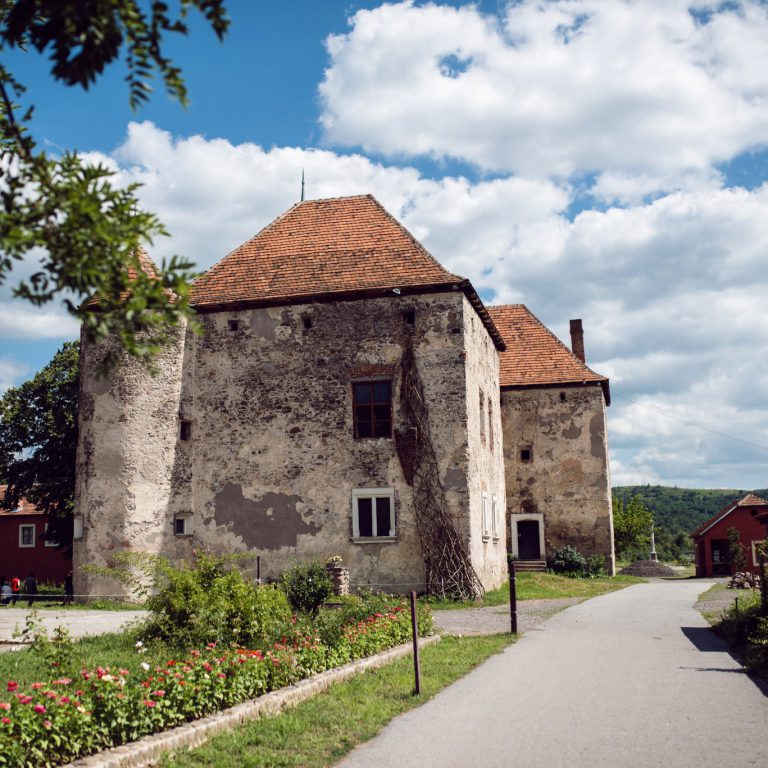It is not very difficult to get to the Saint Miklós castle in Chynadiyovo and take a guided tour there: the door is always open to tourists and travelers. However, we needed more information than the guides usually tell during excursions. That is why we arranged the meeting with Jossyp Bartosz, the person who leases the castle, in advance. He managed to meet us in one of the hot weekdays during his break for lunch. Yet, we came across people from different tourist groups, Ukrainian, Polish, Hungarian, that visited the castle almost every day.
Some 15 years ago there was a garage and a car depot on this territory, and there was a big dust-hole inside the castle. The basement of the castle is still closed as additional investments are needed to clean and restore it. What happened to this castle for such a short period of time? How could it transform from a ruin into one of the most popular tourist objects in Zakarpattia?
Jossyp Bartosz came back to Ukraine in 1999. He was living abroad for a long time and managed to learn four foreign languages. He felt jealous of the little villages in Hungary, Slovakia, Romania, and Germany which could afford to hold annual open airs for artists. Tourists from all over the world are invited to these villages while there are a few of such events in Ukraine and only one in the Zakarpattia region.
— Tetyana Petrichko invited me here, and there was a car depot here. I actually met Tetyana before when I invited her to an open air. There were trucks, garages here, something unbelievable was going on here. We break into the castle as nobody wanted to let us in. And then it suddenly dawned on me: what if world famous people could come to our open airs, which we hide inside some health resorts like the worst people. What if we could organize open airs and exhibitions here, and the walls would be decorated with paintings, and some concerts would be held as well as meetings with writers? It was a crazy idea which nobody believed in, not a single person in this world. But the castle has decided, it said it must “be”, and it all started. I still don’t understand how it happened.
Jossyp Bartosz soon got married to Tetyana who introduced him the castle. She is a unique artist who creates Easter eggs called “shkryabanka” (scratched eggs). She scratches her own drawings or some world masterpieces of art on the painted eggs. Several times she received orders for some exotic “shkryabanka” (scratched eggs). For example, in 2008 a local prosecutor ordered to create a “shkryabanka” with the portrait of Viktor Yushchenko. It must have been a birthday present.
Jossyp and Tetyana were living in one of the rooms of the castle, however now they are living not far from it. They didn’t have running water in the castle, and it was always cold there. It was the price to pay for living in the building of the XVth century. When it all started, Jossyp was living in a rented apartment in Chynadiyovo, he walked to the castle by food every day. He borrowed money from his friends and acquaintances as well as painters from different countries to organize his first open air.
In front of the castle, there is an old building from Soviet times. The ground floor belongs to Jossyp Bartosz. It was a hostel years ago, and then people bought their flats to own them. Jossyp and his wife opened a school of the harmonious development of people here. It is possible to study visual art and music here and do some sports here. There are different schools and language clubs here, and the club which is called “Young Archaeologist”. You see only a humble piece of paper with the name on it on the door of Jossyp Bartosz with no signs of royalty or golden frames. The “red” directors of other architectural monuments notice this difference from the very beginning.

— I didn’t have a single thought about leasing a castle. You know that artistic people are a little bit impractical. The castle chose me, it said: “Come here”, and so I came.
— First steps were ridiculous, so ridiculous you couldn’t even imagine. The whole village laughed at me as loudly as they had ever laughed at anyone. I went to the village council and told them I would like to take this castle and transform it into a cultural and artistic center. They said: “Man, you went nuts, you are a painter and you have money so you think you can do something?” I said: “We would figure it out.” These were the people from the village, and I came from abroad with a sharp tongue and plotted something incredible. They believed me for some reason because they knew that nothing would come out of it. We signed it. I was told the same things in the regional administration: they said nothing would be done but signed it. I don’t know why.
When it got more serious on the oblast level – it was another business. All the castles belonging to the governmental Institution of Ukrainian Building (Ukrderzhbud). The department of architecture was studying my documents trying to figure out what, where, and how. There were no laws that permeated leasing of a castle, and at the same time, there were no laws that forbade it. No similar cases took place in Ukraine at that time. They called someone in the capital, Kyiv and Lviv, and said they could do nothing. Ivan Mohytych, a renowned architect from the Ukrainian Department of Restoration was the one who helped. He was the principal man in that organization. He knows me personally and knows my father-in-law who was a national hero of Ukraine. Ivan said: “We should do a typical contract of the lease”. This contract helped us to get here. It was not really legal, to be honest. It was a contract for fifteen years for lease with the right for prolongation. In 2005 when President Yushchenko signed the law about the preservation of cultural heritage, we signed a new contract for lease for 49 years. That is when we received real governmental documents about the lease of the castle.
Jossyp Bartosz can proudly be called the only successful leaseholder of a castle. “Business” magazine was exploring this topic recently, and it turned out that there were two more attempts to lease a castle for concession but they failed. Chynadiyovo castle was lucky enough to be. However, Jossyp Bartosz emphasizes that it is the castle which chose him, not vice versa, and it is the castle just decided to be.
— The article which is titled “Jossyp Bartosz thinks that castles and palaces will flourish in Ukraine” was published recently. “Yes, I do think so. If castles and palaces will be given for concession to such people who value the idea first of all. Businessmen will not be able to do anything. They will bring harm which will have negative consequences for the next hundred years. These must be the people devoted to the idea, and those who know where they are going, those who understand the essence of culture and its purpose, how to deal with it today in these conditions, and what must be emphasized. We are dreaming about the appearance of new businessmen, or rather, old businessmen – benefactors. These are, actually, not new businessmen, and they are probably older than the real businessmen. Our goal and our dream, which we aim to achieve, is to create a national park, local historical heritage site, and when we do it – we will be able to say that our goal is achieved.
Jossyp Bartosz is from Mukachevo. First financial aid he received from Hungarian Ministry of Cultural Heritage, not from Ukraine. When he repaired the rooms in the castle he organized a museum there and the library sometime later. There are historical artifacts and paintings there now. The majority of them are the copies of the portraits and the family`s coats of arms of the previous owners of the castle in Chynadiyovo. The duchess Ilona Zrínyi, the duke Emmerich Thököly, the prince Ferenc Rácóczi II, and the family of Schönborns. The descendant of the first owners, Dr. János Perényi, came to visit the opening of the museum exposition.
— In Chynadiyovo they perceived me awfully. They thought that I was some billionaire oligarch who came here to destroy everything. But they saw the conditions in which I was living myself. We rented an apartment with Tetyana, and people saw that we were like all normal artists. Sometimes we didn’t have money for dinner, sometimes we didn’t have money for a loaf of bread. We borrowed money and lived all these years in that way. We are still living like this. It is the first month we have running water in the apartment; however, we spent 10 years in one of the rooms of the castle without any conveniences. We were bringing buckets of water to our room. Now we can turn on the tap and wash hands. The maximum temperature in winter didn`t reach 11 degrees above zero. And guided tours from morning till night without any weekends. Once we were invited to Morocco. We thought that we could be able to sell some pysankas (painted eggs) on the open air and then invest that money into the castle. Didn’t sell any pysankas but presented one to the king of Morocco, let him have it. This was the longest time away from the castle – 5 days.
“Calgan” is the name of social union created by Bartosz. He says that the root of calgan is the prototype of the root of ginseng. The whole power of the plant is concentrated in the root. The movement inside, into the roots, the journey into the depth is the goal of a social union. People in Calgan work to restore lost traditions in visual art, music, moral upbringing, and other spheres of life.
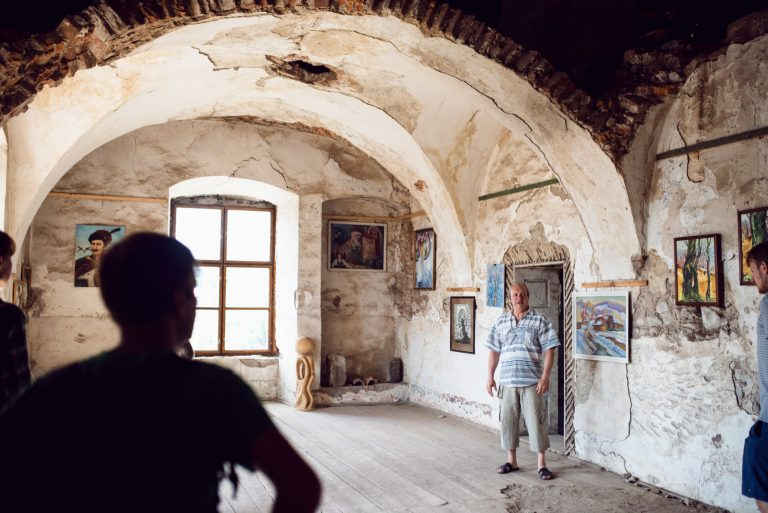
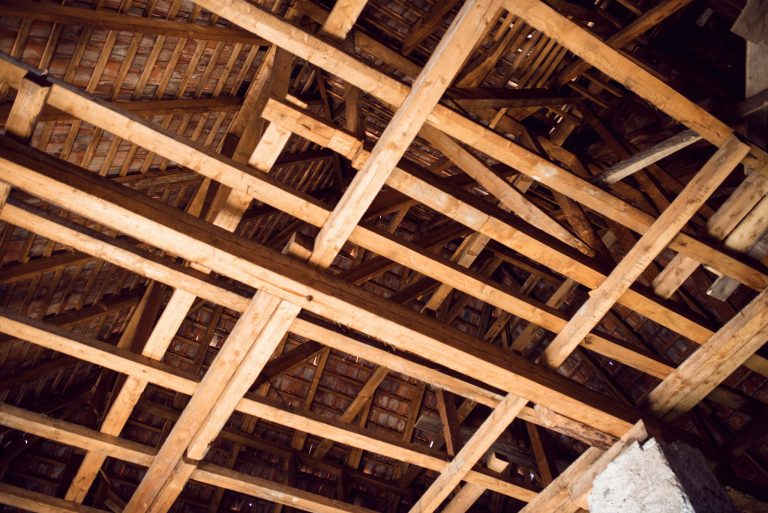
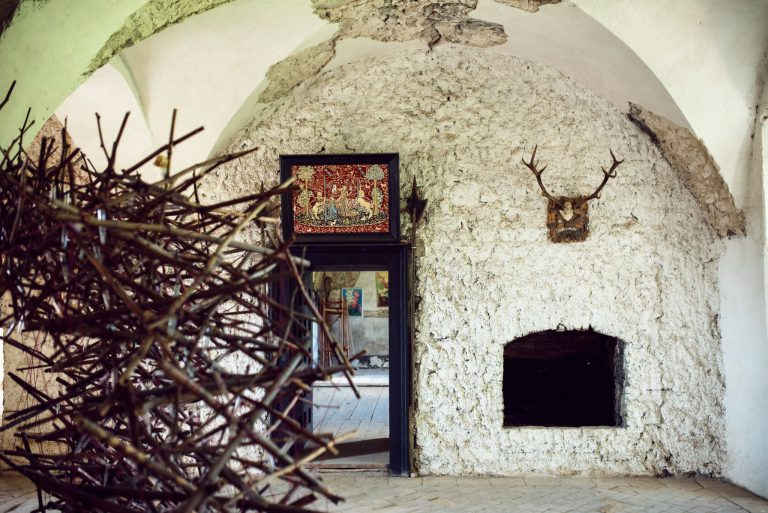
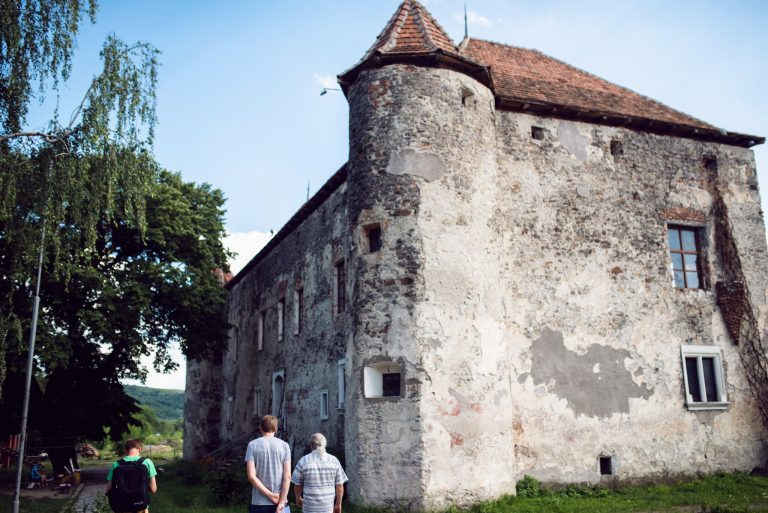
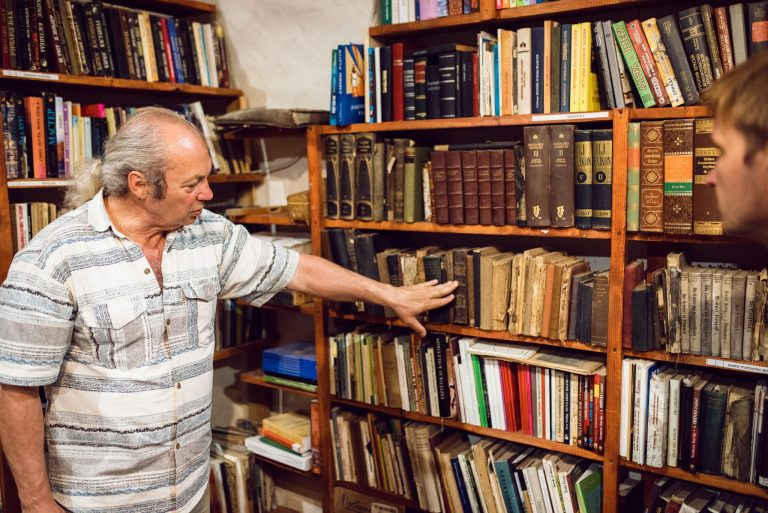
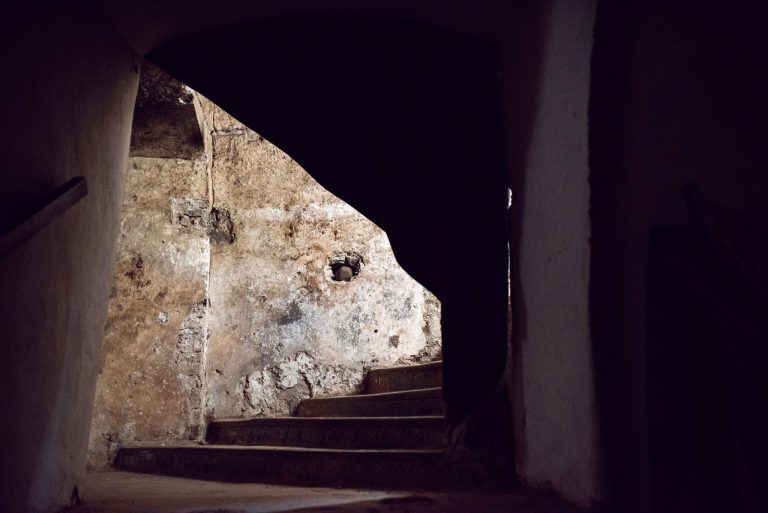
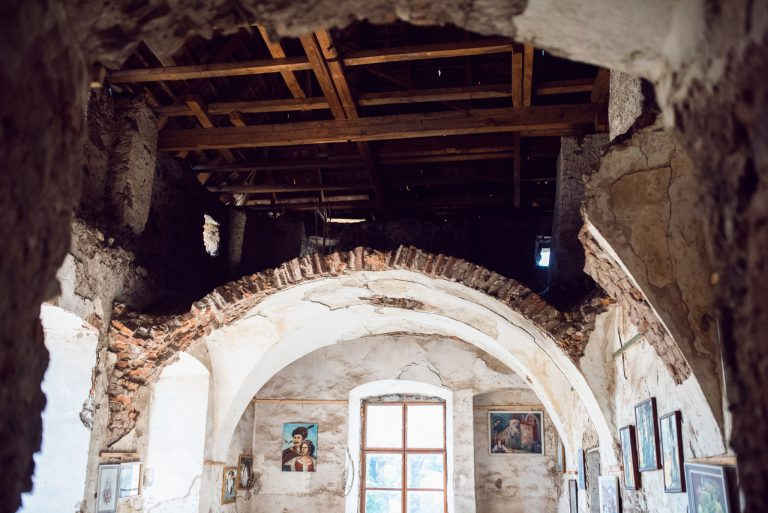
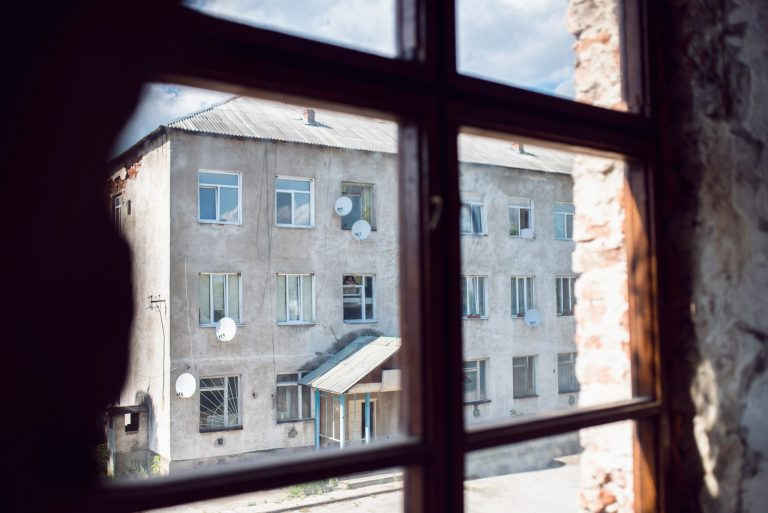
slideshow
“Silver Tatosh”, the festival of medieval culture, was first organized in spring 2012 in the yard of the castle. Knights` teams from all over Ukraine, Slovakia, and Hungary came to participate in it. The goal of this event was to draw the attention of young people to the restoration of the culture inherited from previous generations.
— After the events in Kyiv, foreigners avoided this place, however, Ukrainians started to visit it more often. After the events in Mukachevo it was horrible, no one here to visit. Belarusians, Hungarians, and Germans stopped coming here. Now it is getting better, we have more and more foreign tourists every day. I speak four languages I can conduct an excursion in any of these.
Volunteers work here in Saint Miklos. They arrange excursions, clean, work in the art school. Six or more volunteers come from abroad every year.
— Once we had a volunteer from England, a woman of fifty-eight. Next time the man in his seventies came from Poland. He came here to be a volunteer, he wanted a shovel, he wanted to work because he loves Ukraine. I gave him a shovel but he had pain in his leg. And he couldn’t go to this toilet so we arranged him to go to the neighbors` toilet. Two years we have students from Mariupol University here. They have nowhere to go, and their professor came to visit, he’s a good man and we arranged everything: now his students undertake internship here. We also cooperate with organizations from Kyiv which come here to have an archaeological internship. Once we had a volunteer from Spain, a young girl who almost got married here.
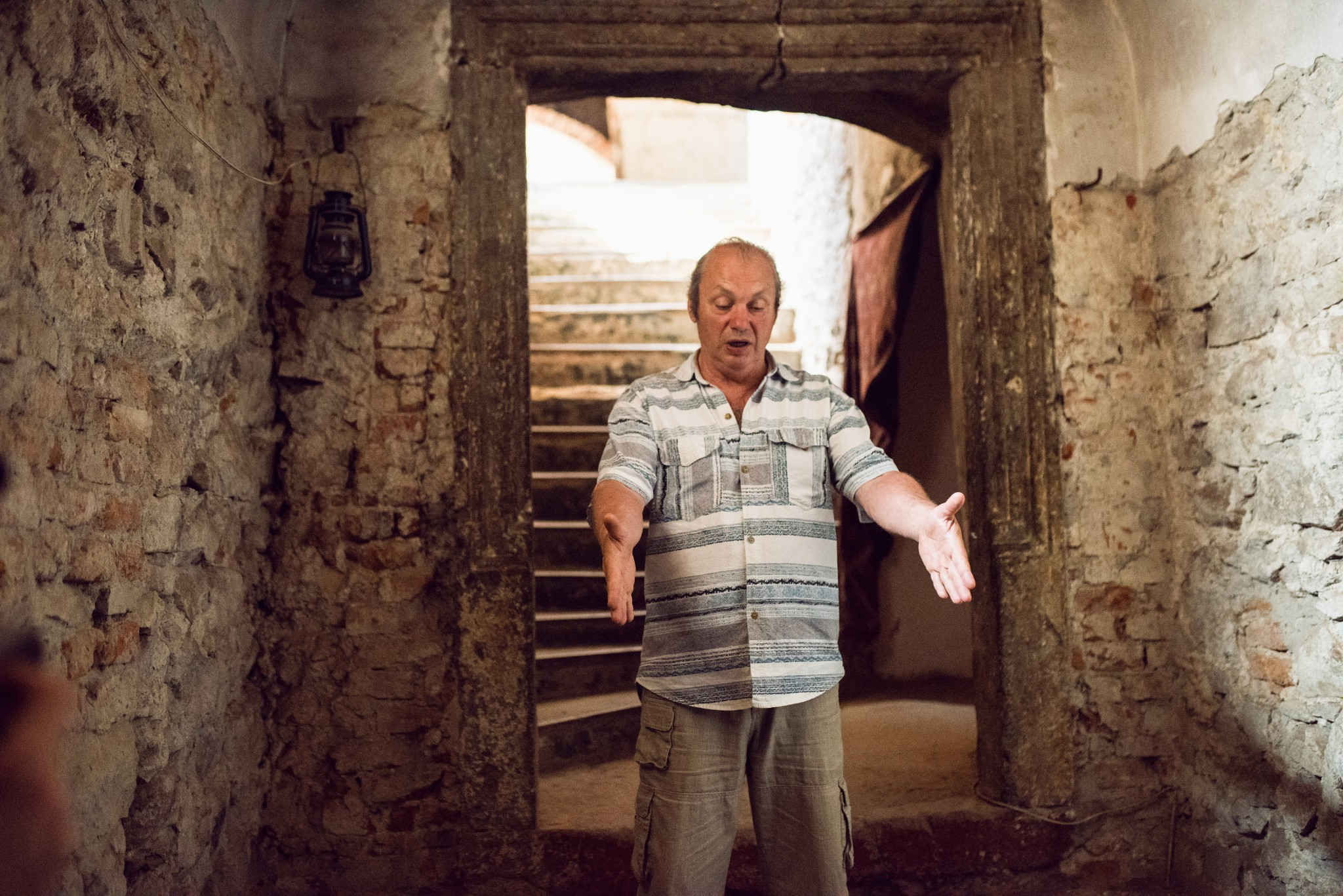
— Serednyanskyi castle is in a horrible state. It is awful what is going on there. Husky castle was deconstructed up to the basement by some barbarians, that was a beautiful castle a big one with six hectares of a reserved land. There are also Vyshkyvskyi castle, Bronetskyi castle, and Dovzhanskyi. We are planning to lease Dovzhanskyi castle next year. I will be responsible for two more castles. This is the news. Those who got infected – will not be cured, it is the disease up to the end.
— There is “Carpathians” sanatorium. This is the Schönborns` palace constructed in 1895.The duke gave half of the rooms in the palace to the center of the rehabilitation of the injured soldiers. Up to 1944, many soldiers passed their rehabilitation there. When in 1945 the army came, the duke Schönborn stayed there up to last days, he didn’t believe that the Soviet army could cross the Carpathian Mountains. But they crossed them. Then he got in the car and went to Vienna. Locals didn’t wait long to ravage the place – they took everything they could, even the smallest things. All the paintings and furniture were stolen. My father-in-law confessed that he also had stolen some books there and kept them in his loft. So I was lucky. I expropriated those books, and now they are here in this library. All that is left from the castle is this shelf with the books and the chandelier.
A library was opened in Chynadiyovo castle recently. Yurii Andruhovych came to be present during the opening night. Jossyp Bartosz shows the library and leads to several rooms in the former hostel.
— Welcome here! These are the tools we use to create pysankas. This is Tetyana Bartosz, an artist. She was the one who took part in everything which happened here and she still works here.
Jossyp says that people love staying on the second floor. One can see through the whole roof there. People like watching and thinking about how it all was made. Builders come from Kyiv and say that they are not able to repeat what was down here with the roof. They plan to preserve the roof completely.
— In Europe they are prone to preserving rather than restoring. When we talk about a restoration, in reality we don’t have the right to do it, all we can do is preservation. If it is restoration which century should we choose, which age should we show? We have four types of windows here, and these are only those types which are present. We have five types of doorways here which one should be left? Partition walls changed with every new owner – so which of them should be restored? That is why we preserve and show people in the whole cut -off. We show XVth century and the middle of XVIth century. Unfortunately, we are not able to show other things yet. We do not show the basement of the castle. We honestly say that it is the castle of XVth century. We have the document and the permission, there you can see the copy of this document issued by the king Sigismund. Last year we had a professor Serhiy Ryzhkov from Kyiv with colleagues visiting the castle. They went to the basement, looked around and said: “Uuuh, you guys, you have the ark from the Roman period here. The castle is one thing, and the basement is another.” That is how he created a riddle for us for the next 30 years. We already knew that there were serious defensive installations here as we dig them out and see where the towers and the bastion were. We know about the system of the underground routes already as the specialist from Kyiv had scanned them. We know that these underground routes do exist as we have found the bastion and the well. There were a lot of them here. How can we get them from under the ground?
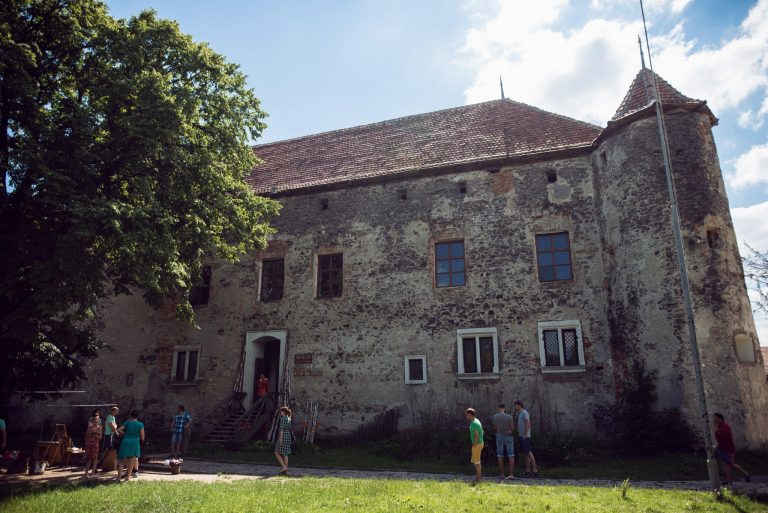
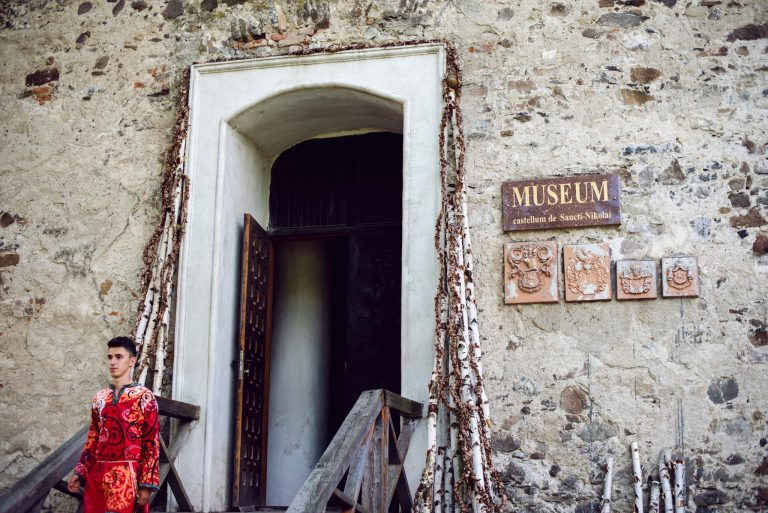
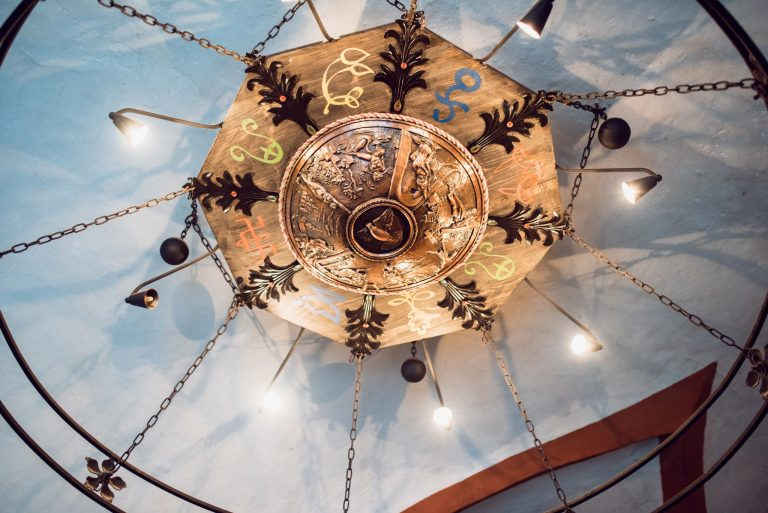
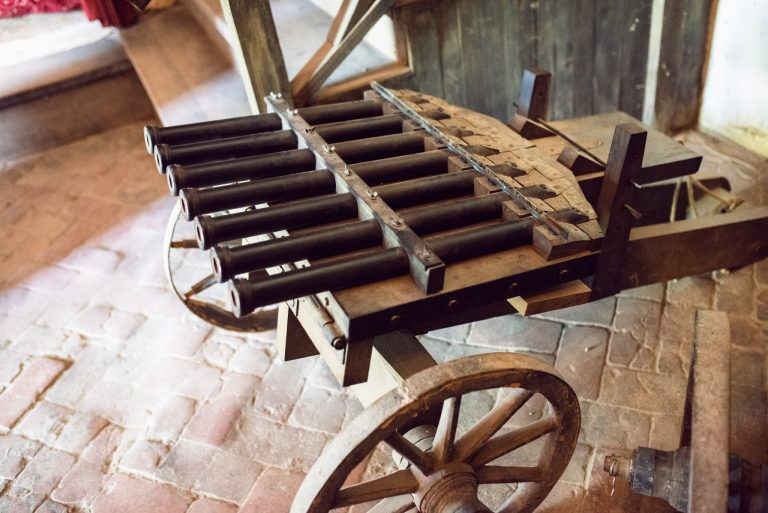
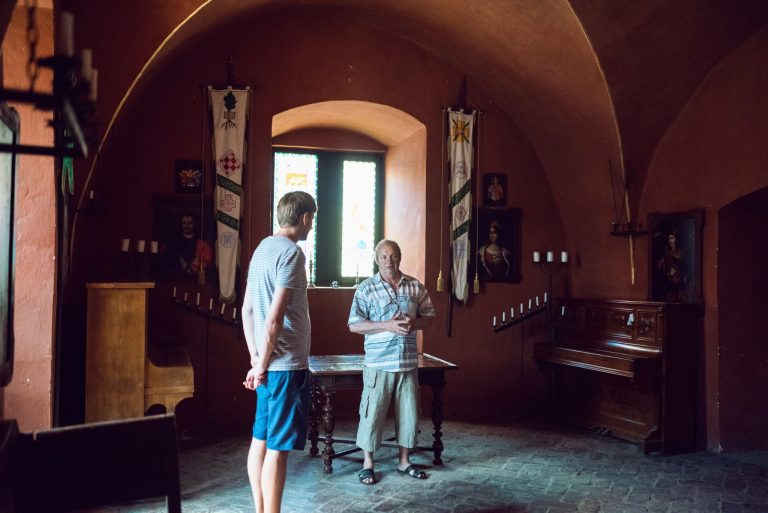
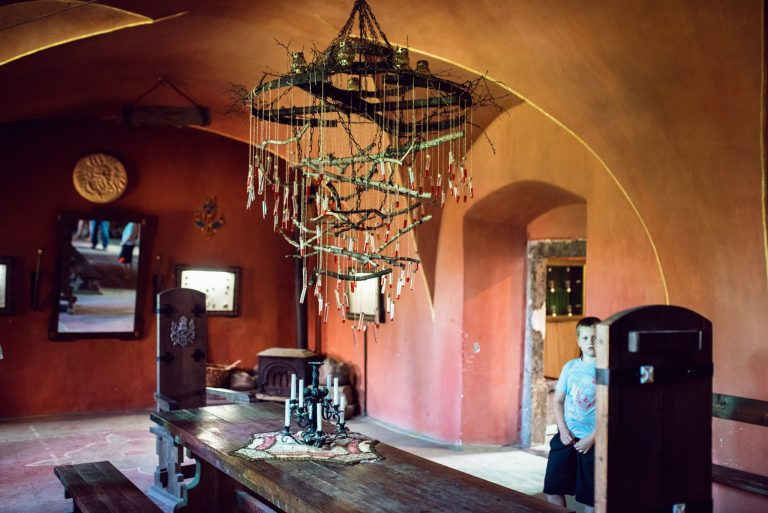
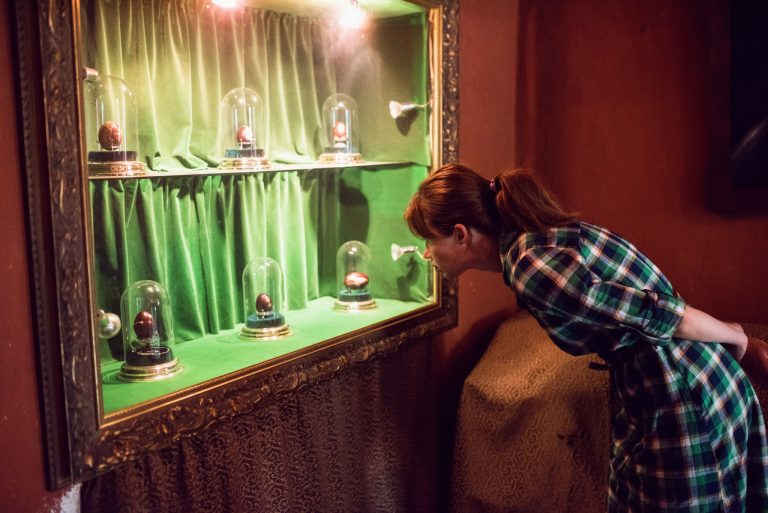
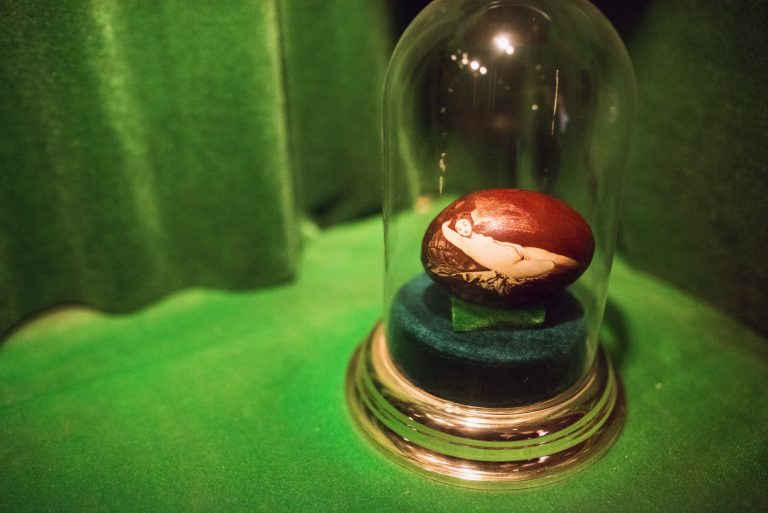
slideshow
— I haven`t painted for the six years already. Considering the fact that in 1994 and in 1995 I created the paintings that have become a renowned style already, which is called visionary. I created such paintings at that time and had exhibitions all over the world. In Paris and in Stockholm. I’m still member of artists` union in Sweden. I had my exhibitions in America, Germany, and Hungary. I had many exhibitions there. But then the question was raised, and the castle chose me. I didn’t only leave my brush; I also quit writing music ten years ago. I am member of the composers` union however I don’t write anything now. I created several collections of music, and that was all. I only managed to collect the materials and publish the book on the basis of local archives. I was collecting these materials for years and then I wrote this book. That is all I have, the rest is somewhere in the boxes waiting for the better times. This is my relationship with art. But I have to add, after I put some salt on the wound of art, I have to add something pleasant, some spoon of honey. We still have one garage that we didn’t take to pieces yet. It was a maintenance department, a big garage. The builders transformed a basilica of IXth century for their purposes. The garage has the form of a basilica. Don’t know how it could happen. We dream about repairing the roof there and making a huge hall for thematic canvases. This place could have four big canvases from four to ten meters each. I would like to create such big thematic canvases. That would be my way of compensation of six years without painting and holding a brush, if I still can hold it of course. We could also create a concert hall there, an organ hall, even if it is a modern electric organ. I played wind instruments a lot of years ago when I worked as an organ player in a church, I’m attracted to such things. I hope to implement all these ideas here.
So the next year Jossyp Bartosz is taking responsibility for two more castles in Zakarpattia. It`s difficult to imagine how he’s going to manage all that. As soon as we said goodbye to him, he met a group of Hungarians and started conducting his next tour for them around the castle. This castle deprived him of his art but turned him into a historian, an explorer, a benefactor, and an absolute fan of his work.

